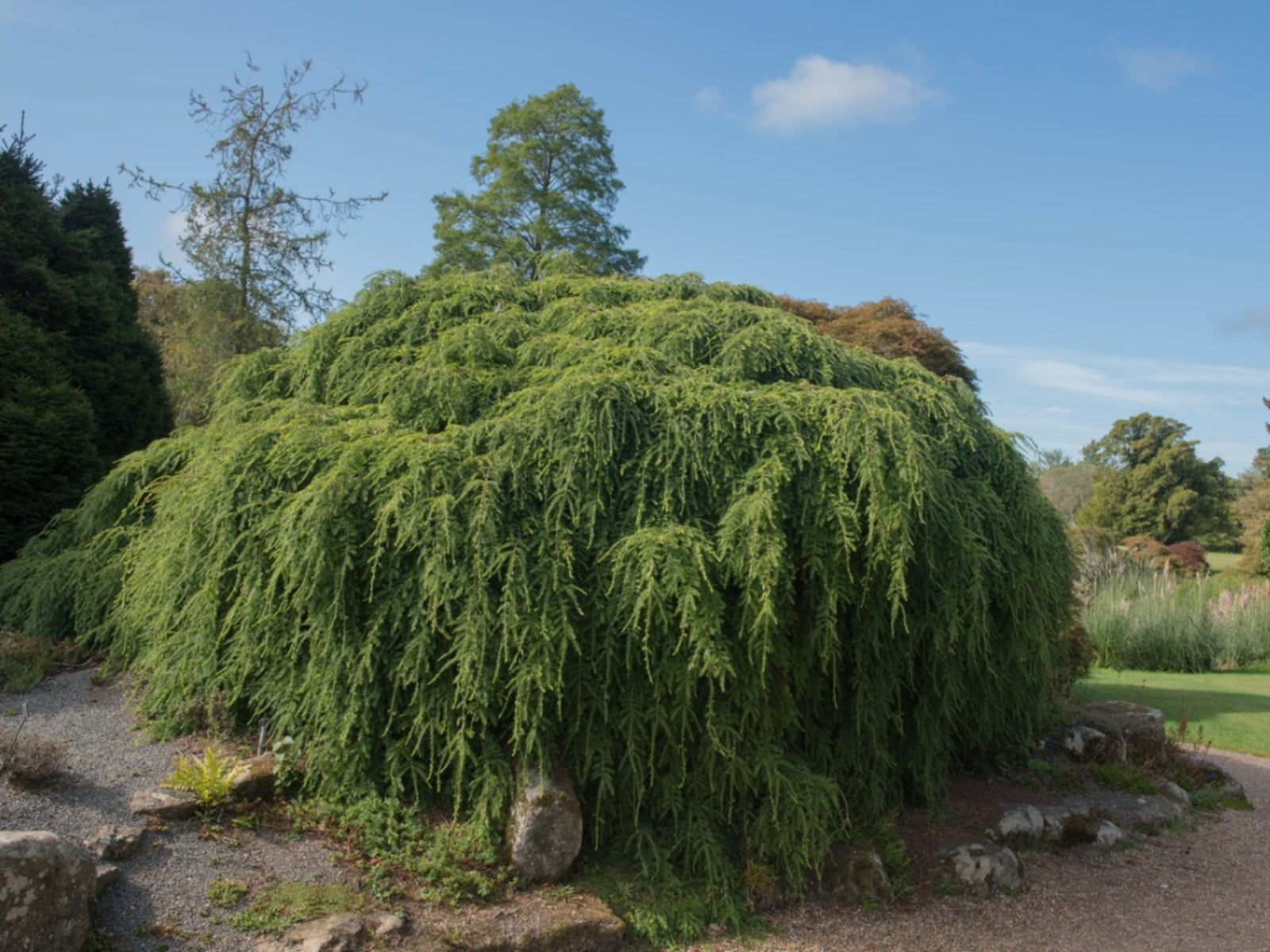Weeping Hemlock Varieties – Information About Weeping Hemlock Trees


Weeping hemlock (Tsuga canadensis ‘Pendula’), also known as Canadian hemlock, is an attractive evergreen tree with a graceful, weeping form. Read on to learn about planting a weeping hemlock in your garden.
Weeping Hemlock Growing
There are a number of weeping hemlock varieties available to gardeners, all known collectively as ‘Pendula.’ Sargent’s hemlock (‘Sargentii’) is one of the most popular. Others include ‘Bennett’ and ‘White Gentsch.’ A moderate grower, weeping hemlock reaches mature heights of about 10 to 15 feet (3 to 4.5 m.), with a width of up to 30 feet (9 m.), depending on how the tree is pruned. Weeping hemlock displays spreading branches and dense foliage with a delicate, lacy texture, but there’s nothing fragile about weeping hemlock trees, which grow in USDA plant hardiness zones 4 through 8. Weeping hemlock trees thrive in partial or full sunlight. Full shade produces a thin, unattractive plant. Weeping hemlock also needs average, well-drained, slightly acidic soil. It prefers moist conditions and doesn’t do well in dry soil or extremely hot weather. Also, plant weeping hemlock where the tree is protected from harsh winds.
Weeping Hemlock Tree Care
Water weeping hemlock trees regularly, especially in hot, dry weather because weeping hemlock is intolerant of drought. Water is especially important for young, newly planted trees and helps develop a long, sturdy root system. Prune weeping hemlock trees as needed in late winter or early spring to control size or maintain a desired shape. Feed weeping hemlock trees before new growth appears in spring, using a good quality, general-purpose fertilizer. Apply fertilizer according to label recommendations. Treat aphids, scale and spider mites with insecticidal soap spray. Repeat as needed. Don’t spray insecticidal soap if ladybugs or other beneficial insects are present on the leaves. Also, postpone spraying if temperatures are over 90 F. (32 C.), or if the sun is shining directly on the leaves.
Sign up for the Gardening Know How newsletter today and receive a free copy of our e-book "How to Grow Delicious Tomatoes".

A Credentialed Garden Writer, Mary H. Dyer was with Gardening Know How in the very beginning, publishing articles as early as 2007.